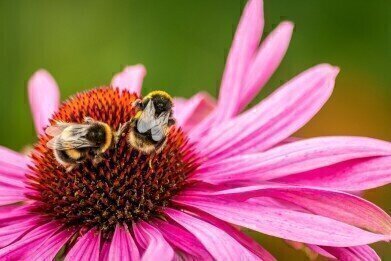Environmental Laboratory
How Do Bees Accelerate Flowering?
Jun 14 2020
Bumblebees are capable of stimulating the growth of flowers in times when pollen is scarce, according to a ground-breaking new study from the Swiss Federal Institute of Technology in Zurich. By using their mouths to effectively “bite” into the leaves of plants, bees can speed up the flowering process and access pollen by up to a month ahead of normal flowering schedules.
Although the biting phenomenon has been observed before, no research had previously been undertaken into its purpose or effects. As such, the EHT Zurich study represents a significant breakthrough in understanding how bees react to the challenges brought on by anthropogenic climate change.
Spring bloomers
Spring arrived earlier than it ever has done before in 2020, with many plants already blooming by mid-April and much of the northern hemisphere enjoying temperatures that wouldn’t normally occur until the height of summer. But while our ability to predict these anomalous weather patterns continues to improve, we are still only just beginning to understand how they can adversely affect other flora and fauna.
One potential casualty is the humble bumblebee. Dependent upon the regularity of the seasons to feed upon pollen, there is the potential for the life cycles of these all-important cross-pollinators to be thrown into disarray because of climate change. Of course, the yields of countless other plants – many of which form the crops that feed the human race – are reliant on their continued activity, meaning the decline of bee populations across the globe should be very concerning indeed.
Premature flowering
Fortunately, there does appear to be some good news on the horizon. The EHT Zurich study, which was published in the online journal Science late last month, found that bumblebees were capable of accelerating the flowering process by causing trauma to the leaves of the plant in question. They did this by “biting” the foliage in both laboratory environments and real-world scenarios, and did so with greater frequency when there were fewer opportunities to gather pollen available.
The results were astounding. Tomato plants were found to be the most susceptible to the tough love treatment, with some plants flowering as many as 30 days in advance of those which were not subjected to the bee bites. Mustard plants also showed noteworthy results, flowering up to 14 days faster.
The magic touch
Perhaps most interesting of all, the scientists were unable to replicate the same effects when they tried to manually simulate the leaf damage. While some degree of accelerated flowering was observed, it was not as effective as when it was undertaken by the bees, suggested that there may be a chemical element to the process as well.
At a time when bees are threatened by degradation of their habitats, depletion of their food sources, increasingly unpredictable climatic conditions and even a deadly virus of their own, their ingenuity in stimulating plant growth through unconventional means offers hope that they can navigate their way to survival, despite the obstacles thrown in their way by the human race.
Digital Edition
IET 34.2 March 2024
April 2024
Gas Detection - Biogas batch fermentation system for laboratory use with automatic gas analysis in real time Water/Wastewater - Upcycling sensors for sustainable nature management - Prist...
View all digital editions
Events
Apr 30 2024 Melbourne, Australia
Apr 30 2024 Birmingham, UK
May 03 2024 Seoul, South Korea
May 05 2024 Seville, Spain
May 06 2024 Minneapolis, MN, USA


















